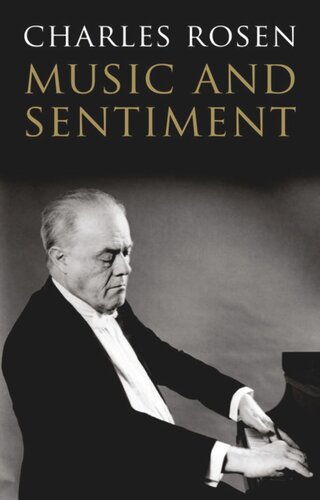

Most ebook files are in PDF format, so you can easily read them using various software such as Foxit Reader or directly on the Google Chrome browser.
Some ebook files are released by publishers in other formats such as .awz, .mobi, .epub, .fb2, etc. You may need to install specific software to read these formats on mobile/PC, such as Calibre.
Please read the tutorial at this link: https://ebookbell.com/faq
We offer FREE conversion to the popular formats you request; however, this may take some time. Therefore, right after payment, please email us, and we will try to provide the service as quickly as possible.
For some exceptional file formats or broken links (if any), please refrain from opening any disputes. Instead, email us first, and we will try to assist within a maximum of 6 hours.
EbookBell Team

0.0
0 reviewsHow does a work of music stir the senses, creating feelings of joy, sadness, elation, or nostalgia? Though sentiment and emotion play a vital role in the composition, performance, and appreciation of music, rarely have these elements been fully observed. In this succinct and penetrating book, Charles Rosen draws upon more than a half century as a performer and critic to reveal how composers from Bach to Berg have used sound to represent and communicate emotion in mystifyingly beautiful ways.
Through a range of musical examples, Rosen details the array of stylistic devices and techniques used to represent or convey sentiment. This is not, however, a listener’s guide to any “correct” response to a particular piece. Instead, Rosen provides the tools and terms with which to appreciate this central aspect of musical aesthetics, and indeed explores the phenomenon of contradictory sentiments embodied in a single motif or melody. Taking examples from Chopin, Schumann, Wagner, and Liszt, he traces the use of radically changing intensities in the Romantic works of the nineteenth century and devotes an entire chapter to the key of C minor. He identifies a “unity of sentiment” in Baroque music and goes on to contrast it with the “obsessive sentiments” of later composers including Puccini, Strauss, and Stravinsky. A profound and moving work, Music and Sentiment is an invitation to a greater appreciation of the crafts of composition and performance.